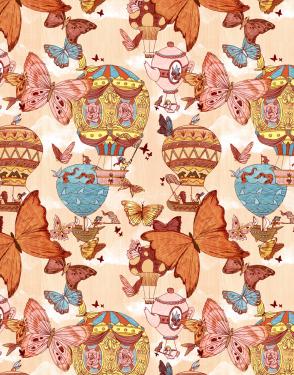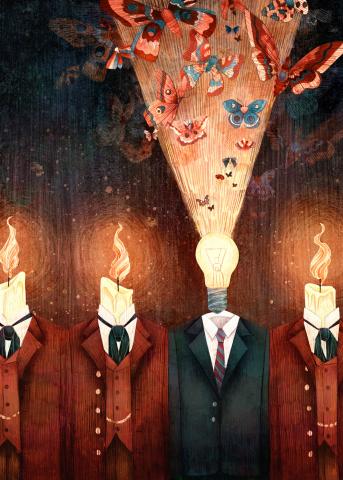It’s a problem most writers face. But the danger seems particularly acute for nonfiction writers who are accountable to real people, even when names are changed. How do you tell the story you set out to tell? Or, put slightly differently, how do you tell the story that is yours to tell? In my case, I had to write the wrong story to find the right story.
My essay “On Reading,” which appears in the NAR fall 2015 issue, is about my students in a South Central Los Angeles high school. I often write about my students, whether in urban LA or in rural Nepal. As with any writing that concerns the “other,” the danger lies in how I present them. I want to be honest in my depictions, whether my subjects herded water buffalo and used an outhouse or wore pacifiers on strings around their necks and had gold teeth. I wonder how my students would feel on the unlikely chance they ever read my essays. Would they see a fair portrayal of themselves? Or would they see my work as an appropriation of their lives? Can I even imagine how my students see themselves? Vivian Gornick, in The Situation and the Story, affirms the importance of such questions: “In all imaginative writing sympathy for the subject is necessary not because it is the politically correct or morally decent posture to adopt but because an absence of sympathy shuts down the mind….The empathy that allows us, the readers, to see the ‘other’ as the other might see him or herself is the empathy that provides movement in the writing” (34-35).
The cliché version of my teaching experience is everywhere, from Dangerous Minds to Freedom  Writers. White Middle Class American Has Eyes Opened to Humanity by Poor Darker-Skinned Students. While gross oversimplification is one problem with this story, a more troubling problem is that it situates a white middle-class person at the center of a narrative about race and privilege. Recently I have begun doing privilege walks with my high school students, an activity that uses physical movement to make visible the disparities in all kinds of privilege within a group of people. However, I paused when I heard someone question why discussions of privilege must always be about helping those who have it see their invisible gifts. What about, this person speculated, a discussion about white privilege wherein the white people do not speak, only listen to what people who are not white have to say on the subject? What if white people, and what they do or do not understand about their privilege, were not always in the limelight?
Writers. White Middle Class American Has Eyes Opened to Humanity by Poor Darker-Skinned Students. While gross oversimplification is one problem with this story, a more troubling problem is that it situates a white middle-class person at the center of a narrative about race and privilege. Recently I have begun doing privilege walks with my high school students, an activity that uses physical movement to make visible the disparities in all kinds of privilege within a group of people. However, I paused when I heard someone question why discussions of privilege must always be about helping those who have it see their invisible gifts. What about, this person speculated, a discussion about white privilege wherein the white people do not speak, only listen to what people who are not white have to say on the subject? What if white people, and what they do or do not understand about their privilege, were not always in the limelight?
The narrative arc is you, a well-meaning editor told me when an agent expressed interest in my collection of essays. I love the voice, the agent said, but I want more narrative resolution so the collection coheres as a whole. Okay, I said. I’ll try. I carved up the essays and restructured the entire book into a more traditional narrative. The agent passed on it anyway. So I put the book away for a few months. When I forced myself to reread it, I thought ugh. This is not the story I set out to tell. I had wanted to write about my students; I ended up writing about myself.
In this second draft I seemed guilty of what Chimamanda Adichie calls “a kind of patronizing, well-meaning pity” towards my students. In her TED talk “The Danger of a Single Story,” Adichie uses this phrase to describe her American roommate’s attitude toward her, a college freshman newly arrived from Nigeria. But it also describes the worst way do-gooder liberals (I include myself here) can approach their work with the people they most mean to help. In writing, as in teaching, this pity has no place. No one wants pity. Compassion, yes. Sympathy, yes. Pity, no. Returning to the essays with this clarified vision was invigorating. Granted, writing the wrong book to get to the right essays is not terribly efficient, but it was effective.
Yet of course my essays are about me as well. The task is to portray myself as neither hero nor villain nor victim, but someone complex enough to be real. Gornick again: “Inevitably, the piece builds only when the narrator is involved not in confession but in this kind of self-investigation….Here, it is self-implication that is required. To see one’s own part in the situation—that is, one’s own frightened or cowardly or self-deceived part—is to create the dynamic” (35-36). Aha! My own frightened or cowardly or self-deceived part? No problem. I have lots of parts like that. I just didn’t realize the importance of letting them show.
And isn’t that precisely what we are? Implicated. There is a lovely muddiness to the word: it resides somewhere between bystander and perpetrator. The reason we are interested in trying to tell our true stories, whether we stand at the center or as witnesses at the edge of the wood, is because we are implicated. In stories that deal with privilege and race and class, this is even more true. We are implicated by our roles in the various societies we find ourselves in. We are implicated by our very humanity. And the ways in which we are implicated (not to mention the ways we do or do not see “our own part in the situation”)—now there’s an interesting story. Even if it is the harder one to write.





